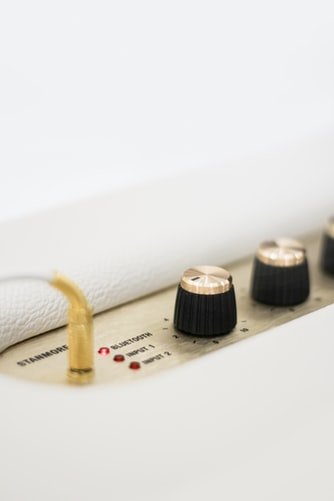You have just purchased a TV and you are planning to turn your living room to your personal entertainment center. Obviously, the next purchase would be a home theatre package that comes with five speakers, a subwoofer, and a huge AV receiver. But good home theatre systems are costly as the need for so many different components. They also occupy a lot of space and are difficult to set up as too many wirings are involved. In this context, one of the best options you can choose is a soundbar. Here are a few tips to buy a soundbar.
Soundbars provide you with a solution to those issues. Generally powered and self-amplified, the soundbar is a single speaker that can be kept below the TV. Utilizing acoustic design, soundbars can partly recreate the surrounded sound effect by focusing on the sound and bouncing it off the walls in a room. The advantages are obvious when it comes to placement, price, and convenience since you don’t worry about the complicated wiring and the installation, or component prices. In addition, the setup and shape make it a great option for music too.
It is significant to note that the soundbars only generate a virtual surrounded sound effect which may stimulate the experience of a proper 5.1 surround system. However, a true surround effect is best attained with the right home theatre system, and if you have the means then that is what you should choose for instead.

What is in the package?
A soundbar is generally a single speaker that is considerably wider than it is tall. It is a narrow, long speaker that is generally about the length of the long side of the TV set. The soundbar will have a wide array of speaker drivers and is traditionally a wide stereo speaker. The width of the speaker is what creates the “virtual” surrounding effect of a home theatre system. In addition, soundbars are most often self-amplified with the in-built amplifier but into the speaker itself. In such a case, you will also have the power cables included in it.
A good soundbar probably comes with a subwoofer with it, which connects to the main speaker either with wire or without wire. If it is the former, it means that you can conveniently keep the subwoofer under some furniture and out of the way, given you have a power socket to the plugin, of course. It would be perfect if you had a small display over the unit, as this will help in adjusting the volume.
Ideally, you should also have a remote for adjusting these settings, but several soundbars come without these, instead of relying on the TV or Blu-ray player for setting the level of volume or accept commands from television’s remote.
Important Tips to Buy a Soundbar
Here are a few things that you must keep in mind while purchasing a soundbar:

Placement- One of the important tips to buy a soundbar is to ensure that you plan where to place the system before purchasing. You need enough space on your TV stand for keeping the main speaker, and enough space on the floor for the subwoofer. You must also ensure that that soundbar does not block any part of your TV, like the IR receiver, which would make it difficult to utilize the remote.
Connectivity- The more connectivity choices, the better. Many soundbars include HDMI connectivity, with the RCA and 3.5 mm stereo connectivity. HDMI is specifically useful if you want to use the soundbar with an AV receiver, while standard audio cables will be serving the purpose of you intend to connect the soundbar to the TV. Bluetooth connectivity is useful and can be used to transmit sound from your television or connect to the tablets and smartphones for videos and music.
Active or passive- As discussed, most of the soundbars are self-amplified and active, which means that you need to plug it into a power socket and run the standard cables to the source device. However, some soundbars are passive and will need external amplification for running. This signifies that you will require an amplifier or AV receiver for powering the soundbar and attain the source signal, which will be connected by using the standard speaker cable. If you want to just upgrade your television’s audio, choose an active soundbar. Passive soundbars are better suitable for customized installations.
Connections- One of the important tips to buy a soundbar is to consider connectivity. These days, new sound cars come with various kinds of connectivity choices- and more than one way of doing several things. Some of the important types of connections to consider are:
- HDMI ARC- So simple. You need to just connect your soundbar to the audio return channel input of your TV with an HDMI cable, and you are set. HDMI is good to use with multi-channel soundbars.
- Wireless connectivity- Do you want to stream audio directly from your soundbar through your tablet or phone? Here are the things you must keep in mind:
- Bluetooth- Today, many soundbars come with built-in Bluetooth, making it easier to stream music from your smartphone, tablet, and computer.
- Wi-Fi- There are varieties of soundbars that come with Wi-Fi connectivity. Wi-Fi connectivity will make it easy for you to connect to the home’s internet network and stream from anywhere you want.
3. Optical Port- An optical port provides you a solid, best-case scenario connection between a soundbar and TV. It is one of the simplest, easiest, and reliable connections available. However, it does not have enough bandwidth to carry more than a 5.1 signal.
4. USB inputs- Generally, USB inputs are just included for firmware updates. However, most soundbar updates these days are done using software updates. You do not require this- unless you want to plug in a thumb drive to play songs.
5. How many soundbars channels do you require? – Consider the channels as sound sources or single speakers. Most movies and shows nowadays provide 5 different audio channels that are embedded digitally: left, right, center and two in the rear. What makes a soundbar different from a typical home theater is all the speakers or channels are kept in one unit. So,
- 2 channel soundbar contains 2 speakers left and right
- 3 channel soundbar consists of 3 speakers. One in left, one in right ad one in the center
- 5 channel soundbar consists of all the 5 speakers discussed above: One each in the center, left, right, and two rear speakers.
- 7 channel soundbars are as same as the 5-channel soundbar. By splitting surround and rear channel info in 4 channels, you get 7 soundbars in total
Buying the right soundbar is not enough as placement of soundbar also matters. Here are a few tips on the placement of soundbars for optimum sound in your room.
Fix it firmly- Currently, soundbars are high in the course and so there are more and more accessories for small soundbars. In the case of hanging televisions, which come without a TV stands, it is a good idea to fix the soundbar on the wall. There are many companies that include a matching wall mount with the soundbar. It is worth installing on the wall in case of items that require a high level of support.
Virtual sound- Soundbars can produce optimum sound. Virtual surround sound is generated by soundbars through targeted reflections of sound in your living room. Thus, it is significant that it can move freely in the room and not be disturbed in any way. Objects that catch sound waves directly should not come in the way.
By following the above-mentioned tips to buy a soundbar, you will end up buying the best soundbar.


